Recovering and Thriving After Birth: Your Postpartum Care Guide
The period covers the period after a woman delivers until the 6th month. The postpartum period is a time of immense physical and emotional changes for a new mother. It is a time of recovery for the body, as the mother’s body adjusts to the changes it underwent during pregnancy and delivery. It is also a time of adjustment for the new family, as they work to establish routines and care for the needs of the newborn. During this time, women may experience a range of emotions, including happiness, exhaustion, anxiety and even depression. There are many resources available to help women cope with the changes they are experiencing during this time. Please keep reading for details on the following topics:
Phases of the postpartum period
Physiologic changes of the postpartum period
Immediate care of the woman and baby
Lochia
Postpartum nutrition and exercise
Bladder and bowel function in the postpartum woman
Sexual relations after childbirth
Contraception
Self-care during the postpartum period
The postpartum check up
Reducing postpartum complications
When to seek urgent medical care
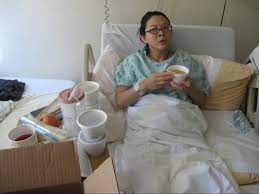
PHASES OF THE POSTPARTUM PERIOD
- The initial or acute period: This phase begins immediately after childbirth and extends until the first 12 hours. During this time, the mother may experience intense physical sensations, such as uterine contractions as the uterus begins to shrink back to its pre-pregnancy size. Medical professionals closely monitor both the mother and baby for any immediate health concerns.
- The subacute postpartum period: This phase spans from 12 hours after childbirth to approximately the 6th week postpartum. It is a time of continued physical recovery for the mother as her body adjusts to the changes brought on by pregnancy and childbirth. Common experiences during this phase include postpartum bleeding (lochia), hormonal fluctuations, breastfeeding challenges, and emotional adjustments as the new family dynamic settles in.
-
The delayed postpartum period: This phase encompasses the time from the 6th week postpartum until approximately the 6th month. While physical recovery may be well underway by this point, the mother continues to experience changes in her body and emotional state. This period often involves adapting to new routines, managing ongoing physical discomforts, and addressing any lingering postpartum issues. Additionally, it is a critical time for the mother to focus on self-care and seek support if experiencing challenges such as postpartum depression or difficulty adjusting to motherhood.
PHYSIOLOGIC CHANGES OF THE POSTPARTUM PERIOD
The postpartum period is a time of great physical and emotional adjustment for new mothers. During this time, the body undergoes a number of physiological changes as it returns to its pre-pregnancy state. This includes changes in hormone levels, physical structure, and psychological well-being. Understanding these changes can help new mothers navigate the postpartum period with greater ease. Here, we will look at the different physiological changes that occur during the postpartum period and discuss how to manage them.
After delivery the uterus is located in line with the umbilicus and the height decreases by one centimeter daily until it reaches the pelvic area.
The uterus sheds and releases its contents as lochia (blood) over the next 3 weeks
The color of the blood transforms from bright red (during the first 3 days) to pinkish (during the 4th to 7th day) to amber
The breast secretes colostrum which contains all the nutrients required by the newborn
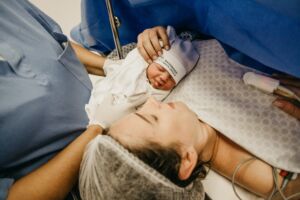
IMMEDIATE CARE OF THE WOMAN AND BABY
Ensuring that baby is comfortable by keeping the room warm
Mother will be kept with her baby at all times
Breastfeeding will be initiated and encouraged
The woman will be educated on danger signs and encouraged to report same when discovers
Cautioned will be taken to ensure that the woman, bed, clothing and environment are kept clean to prevent infection
Woman will be assisted with changing of the sanitary napkin as necessary
She will be encouraged to maintain adequate rest, nutrition and hydration
She will be encouraged to empty the bladder every 2 hours to allow the womb to contract
Movement will be encouraged to minimize the risk of blood clots
Pain medication will be offered as needed to relieve discomfort
Pad checks will be done frequently to monitor the blood loss
The woman will be educated on the danger signs such as:
- Dizziness
- Severe headaches
- Visual disturbance
- Epigastric distress
- Elevated blood pressure and pulse
- Heavy vaginal bleeding
- Elevated temperature
The baby will be monitored for:
DISCOMFORTS IN THE POSTPARTUM PERIOD
Having a baby is a wonderful, life-changing experience. However, it can also come with a number of physical and emotional discomforts that postpartum women may experience. These can range from difficulty sleeping, soreness in the abdominal and perineal area, aches and pains, and hormonal and mood changes. These discomforts are all part of the process of recovering from childbirth, but with the right support, women can make the transition to motherhood more comfortable and enjoyable.
PHYSICAL ACTIVITY

The postpartum period can be an exciting and challenging time for new mothers. As the body returns to a pre-pregnancy state, physical activity can play an important role in recovery and overall wellness. Participating in physical activity can help with postpartum body composition changes, aid in reducing the risk of postpartum depression, and improve overall quality of life. It is important for new mothers to understand the benefits of physical activity during the postpartum period and create a plan that works for their individual needs and lifestyle.
-
Try exercising when the child is asleep: Utilize moments when the baby is resting to engage in physical activity, ensuring uninterrupted focus.
- Use a treadmill, an exercise bicycle, or exercise video: Incorporate indoor exercise equipment or follow exercise routines from videos for convenience and flexibility.
- Perform sit-up exercises while baby is on one’s abdomen or thigh: Integrate abdominal workouts while bonding with the baby, ensuring safety and supervision.
- Dancing around the house: Enjoy dancing as a fun and effective way to stay active while managing household chores or spending time with the baby.
- Go for a walk or jog: Take advantage of outdoor walks or jogs, either alone or with the baby in a stroller, to enjoy fresh air and physical activity.
- Joining a gym or an exercise class: Consider joining a gym or attending exercise classes tailored to postpartum fitness needs, providing structured workouts and social support.
-
Taking swimming lessons: Explore swimming as a low-impact exercise option, offering full-body workout benefits while being gentle on postpartum joints and muscles.
LOCHIA
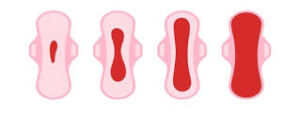
Vaginal bleeding or discharge also called lochia is a common symptom experienced by women. It can be caused by a variety of factors, such as hormone fluctuations, infections, medical conditions, and even stress. It is important to be aware of the signs and symptoms of vaginal bleeding or discharge, as it can be a sign of a more serious health problem. Women should always seek medical advice if they are experiencing any unusual or concerning symptoms.
Also called lochia, lasts approximately 21 days
Be sure to wear a sanitary napkin until the vaginal discharge stops
Avoid using tampons or douching until approved by the doctor or midwife (usually by 6 weeks postpartum) to avoid infection
If having heavy bleeding (soaking a pad in less than 1hour), seek urgent medical care
Be sure to seek medical care if the vaginal discharge has an offensive scent
Avoid foods containing spice which can predispose one to bleed heavily
Train the bladder to urinate at least every 2 hours to allow the womb to return to its pre pregnant size and minimize bleeding
Characteristics of the lochia
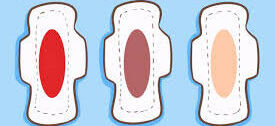
Bright red– days 1-3 (lochia rubra)
Pinkish-brown with a watery consistency-days 4-10 (lochia serosa)
Yellowish-white– days 10-21 (lochia alba)
Postpartum is a time of physical and emotional adjustment for many new mothers. During this time, nutrition and exercise are key components to restoring health and wellbeing, and can have a positive effect on both physical and mental health. Eating a balanced diet, rich in nutrients and low in processed foods, can provide essential nutrients for healing and restoring energy. Exercise can help to rebuild strength and endurance, reduce stress and promote better sleep. By taking the time to focus on proper nutrition and exercise, new mothers can ensure they are taking the best possible care of their bodies during this special time.
Be sure to have a balanced diet
Avoid strenuous activities
Ensure adequate rest is taken
Try to rest when baby is asleep
Drink at least 3 liters of water daily
BLADDER AND BOWEL FUNCTION

The postpartum period can be filled with a lot of changes and adjustments, including changes in bladder and bowel function. It is important to be aware of the potential changes in your body and how to properly manage them. This section will provide an overview of bladder and bowel function during the postpartum period, covering topics such as incontinence, constipation, and other important considerations. To ensure optimum bladder and bowel function:
-
Urinate Often to Prevent Bladder Overfilling: Regular urination helps prevent the bladder from becoming too full, which can lead to discomfort or urinary tract issues.
- Void Every Two Hours: Establishing a routine of voiding every two hours helps maintain bladder health and prevents urinary retention.
- Regulate Bowel and Prevent Constipation: Regular urination also helps regulate bowel movements, reducing the risk of constipation, which can further alleviate pressure on the bladder.
- Drink Plenty of Water: Staying hydrated is essential for overall health and aids in maintaining proper bladder function.
-
Include Plenty of Fiber in the Diet: Fiber-rich foods promote healthy digestion and regular bowel movements, reducing the likelihood of constipation and associated bladder discomfort.
SEXUAL RELATIONS AFTER CHILDBIRTH

It is natural for couples to experience changes in their relationship after childbirth. Whether it’s physical, emotional, or psychological, these changes often affect how a couple interacts and engages in sexual relations. This section will provide an overview of sexual relations after childbirth, including the physical and emotional changes, tips for couples to feel closer, and advice for couples who are struggling.
-
Hormonal Changes and Decreased Desire: Postpartum hormonal fluctuations can lead to a decreased libido, making sexual intercourse less appealing.
- Fatigue from Childcare: Women may feel less inclined towards sex due to exhaustion from taking care of the baby, leading to a lack of energy for intimacy.
- Vaginal Dryness: Hormonal imbalances, particularly low estrogen levels and high prolactin levels, can cause vaginal dryness, making sex uncomfortable or undesirable.
- Healing Time for Perineal Tears: Tears in the perineum, which commonly occur during childbirth, require several weeks to heal completely.
- Resuming Sexual Activity: It’s advisable to wait until postpartum bleeding has stopped and any vaginal stitches have healed before resuming sexual intercourse.
- Initiating Contraception: Contraception should be initiated around the 6-week mark to prevent unintended pregnancies.
- Using Condoms as Precaution: If one wishes to engage in sexual activity before 6 weeks postpartum, using condoms is recommended until other contraceptive methods are available.
-
Ovulation and Pregnancy: Ovulation can occur as early as 3 weeks after childbirth, even before the resumption of the menstrual cycle, so pregnancy is still possible before the 6-week mark.
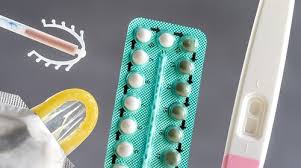
Having a newborn can be a joyous experience, but it can also be a time of uncertainty when it comes to contraception. It’s important for new mothers to understand the available options for contraception after childbirth, from short-term options such as progestin-only pills and condoms, to long-term options such as intrauterine devices and implants. Overview of contraception after childbirth, including the most effective methods and the potential risks associated with each.
-
Contraceptives and Breastfeeding: Contraceptives containing both estrogen and progestin may interfere with the production of breast milk. This is because estrogen can inhibit lactation by suppressing prolactin, a hormone responsible for milk production.
- Hormonal Contraceptives and Breastfeeding: Hormonal contraceptives that only contain progestin are recommended for breastfeeding women because they do not significantly affect the production of breast milk. It’s advised to wait until 6 weeks after delivery to begin using hormonal contraceptives to allow time for breastfeeding to establish and to minimize any potential impact on milk production.
- Timing for Vaginal Rings: Women should wait 6 weeks after delivery before inserting vaginal rings. This waiting period allows for the healing of the vaginal tissues and reduces the risk of complications.
- Diaphragm and Cervical Ring: It’s better to use the diaphragm and cervical ring after the uterus has returned to its natural place, typically 6 to 8 weeks after delivery. Using these methods too soon after childbirth can increase the risk of displacement or discomfort due to the changes in the pelvic organs during the postpartum period.
-
Intrauterine Device (IUD): Inserting an intrauterine device (IUD) should also be delayed until 6 weeks post-delivery. This waiting period allows the uterus to involute and return to its normal size and position, reducing the risk of complications associated with IUD insertion.
SELF CARE DURING THE POSTPARTUM PERIOD
After a woman has given birth, it is important for her to look after her physical and emotional health during the postpartum period. Self-care can help new moms to adjust to the changes in their body, cope with the stress of a newborn, and get back to feeling like themselves. This section will provide an overview of self-care during the postpartum period, including tips on nutrition, physical activity, mental health, and sleep.
-
As the uterus shrinks, the woman may have some bleeding and afterpains: This is a natural process as the uterus returns to its pre-pregnancy size, and it may cause discomfort or cramping.
- The muscles and vagina may feel sore from labor, which will resolve after a few days: Soreness is common after childbirth but typically improves as the body heals.
- The vaginal soreness can be treated with sitz bath every 4 to 6 hours daily: Sitz baths involve sitting in warm water to soothe and promote healing of the perineal area.
- Vaginal bleeding, also called lochia, may continue until 2 to 4 weeks: Lochia is normal postpartum bleeding as the uterus sheds its lining.
- The color of the blood will convert from bright red to amber: This change in color is typical as the bleeding decreases over time.
- Pain to the lower belly may be common for women who had a c-section: Pain medication is usually prescribed to manage discomfort after a cesarean delivery.
- Breast engorgement may occur as breast milk production establishes: This can cause discomfort, but alternating cold and warm compresses and frequent breastfeeding can help alleviate it.
- Regular showers and frequent handwashing are recommended to ensure that the woman’s hygienic needs are met: Good hygiene practices help prevent infection, especially during the postpartum period when the body is healing.
- Pads must be used in place of tampons to avoid infections and allow the vaginal walls to heal: Tampons should be avoided to reduce the risk of infection and to allow the vaginal tissues to heal properly.
- Rest when the baby is asleep: Adequate rest is essential for postpartum recovery and adjusting to the demands of caring for a newborn.
- Accept help when offered and seek help when necessary: Support from friends, family, or healthcare professionals can be invaluable during the postpartum period.
- Drink plenty of fluids, at least 3 liters daily: Staying hydrated is important, especially if breastfeeding, to support milk production and overall health.
- Join support groups to share experiences: Connecting with other new mothers can provide emotional support and practical advice.
- Be sure to eat a healthy and balanced diet: Proper nutrition supports healing and provides energy for caring for a newborn.
- Putting the feet up when sitting or laying down: Elevating the feet can help reduce swelling and promote relaxation.
- Limiting the number of visitors around the baby and ensure that all visitors wash and dry their hands properly: This helps protect the baby from infections during the vulnerable postpartum period.
- Prevent persons from kissing or touching the baby on the face and hands: This reduces the risk of spreading germs to the newborn.
- Wash hands when handling and breastfeeding the baby: Handwashing helps prevent the spread of infection to the baby.
- Ensure alone time with the baby for bonding: Bonding with the baby is important for both the parent and the child’s emotional well-being.
- Speak to a trusted person about feelings: Open communication about emotions can help alleviate stress and anxiety during the postpartum period.
- Get plenty of rest – rest when the baby is asleep: Rest is crucial for physical and mental recovery after childbirth.
- Drink plenty of fluids: Hydration supports overall health and can aid in milk production for breastfeeding mothers.
- Ensure a balanced diet: Nutritious meals provide essential nutrients for postpartum recovery and breastfeeding.
- Accept help when being offered: It’s important to accept assistance from others to ease the transition into parenthood and manage the demands of caring for a newborn.
- Wear supportive bras and avoid bras containing underwires: Supportive bras can help alleviate discomfort and provide support for breastfeeding.
- Always ensure that the baby achieves a proper latch whenever breastfeeding: A proper latch is essential for successful breastfeeding and preventing nipple soreness or injury.
- Avoid alcohol, drugs, and smoking: These substances can be harmful to both the parent and the baby, especially during breastfeeding.
-
Avoid remaining in a prolonged period without eating: Regular meals and snacks help maintain energy levels and support overall health during the postpartum period.
THE POSTPARTUM CHECK UP
The postpartum check up is an important appointment for new mothers to attend shortly after childbirth. At this appointment, your doctor or midwife will assess your physical and emotional wellbeing and make sure you are recovering from childbirth as expected. They will also provide important advice related to breastfeeding, contraception, nutrition and any other issues you may be dealing with in your postpartum period. It is essential that new mothers attend the postpartum checkup to ensure they are healthy and supported in their transition to motherhood. The following occur during the postpartum checkup:
-
Interview of symptoms and challenges: Healthcare providers will inquire about any symptoms or challenges the woman is experiencing postpartum, such as pain, bleeding, breastfeeding difficulties, or emotional concerns.
- Examination of the pelvic area to ensure healing: The healthcare provider will examine the pelvic area, including the perineum and any incisions from a cesarean section, to assess healing and address any complications.
- Examination of the c-section incision: Specifically, the incision site from a cesarean section will be inspected to ensure proper healing and to identify any signs of infection or other issues.
- Discussion and selection of appropriate contraceptives: Healthcare providers will discuss contraceptive options with the woman and assist in selecting a method that aligns with her preferences, health considerations, and postpartum needs.
- Assessment of breastfeeding: The healthcare provider will assess how well the woman is coping with breastfeeding, including evaluating the baby’s latch, milk supply, and any breastfeeding challenges the woman may be facing.
-
Monitoring for signs of postpartum depression: Questions about the woman’s mood and emotional well-being will be asked to screen for signs of postpartum depression or other mental health concerns. This allows healthcare providers to provide appropriate support and intervention if needed.
SCHEDULE OF POSTNATAL VISITS FOR MOTHER AND NEWBORN
These instructions outline the schedule for postpartum visits with healthcare providers:
-
First visit (could be a home visit) within 1 week, preferably on day 3: This initial visit, often occurring around day 3 postpartum, allows healthcare providers to assess the mother and baby’s health, provide support, and address any immediate concerns.
- Second visit 7-14 days after birth: The second visit typically occurs within 7 to 14 days after birth. During this visit, healthcare providers monitor the mother and baby’s progress, address any ongoing issues, and provide guidance on postpartum recovery and newborn care.
-
Third visit 4-6 weeks after birth: The third visit usually takes place 4 to 6 weeks after birth. This visit allows healthcare providers to assess the mother’s recovery, evaluate the baby’s growth and development, discuss postpartum mental and physical health, and provide guidance on contraception and breastfeeding, if applicable.
Disclaimer: The information provided in this content is for general informational purposes only. It is not intended as medical or healthcare advice, diagnosis, or treatment. Always seek the advice of a qualified healthcare professional with any questions you may have regarding a medical condition or healthcare decisions.

